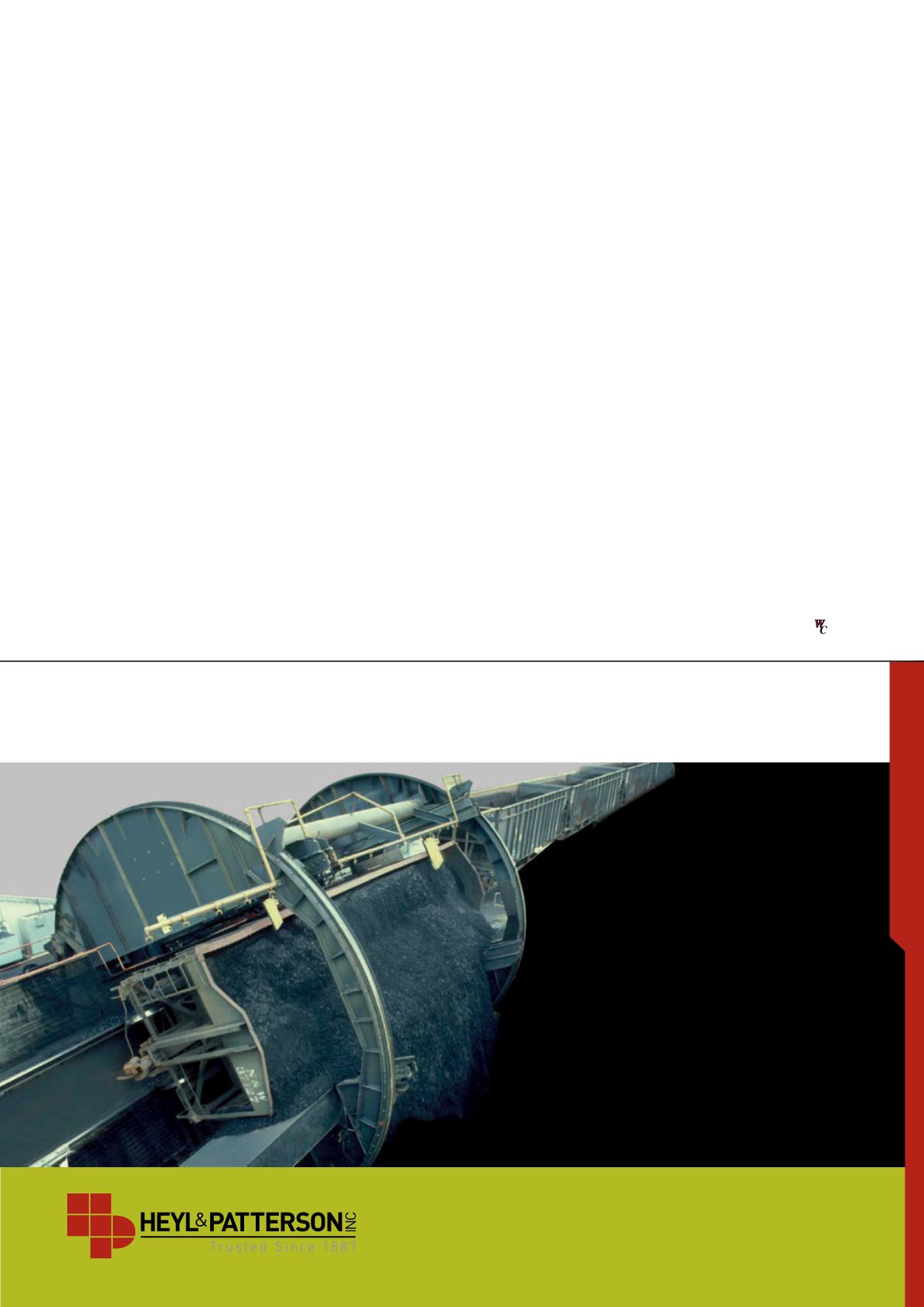
whether laden or not, or to the connecting
railroads while the car is empty and
returning to the home road. Multiply all
that by the number of cars in the train
and bottom discharge has significant
disadvantages, while a rotary dumper
continues its speedier unloading.
Versatility
There is a greater opportunity for a plant
to receive coal if the facility handles both
standard and bottom dump railcars. A
rotary dumper requires a 10 – 15 ft deep
receiving pit, so that it can include
a hammermill to break up clumped or
frozen material. In addition, the platen
can include various integral devices to
aid in safe car handling, such as a weigh
scale that allows railcars to be weighed
before and after dumping, a retarder to
stop and prevent cars from rolling on the
platen, an ejector to remove empty cars
and facilitate throughput, and wheel
guides to help eliminate truck-associated
misalignment.
The best of both worlds is a bottom
dump/rotary hybrid, such as the
machine manufactured
by Heyl & Patterson for Kinder Morgan
in Pasadena, Texas. The hybrid is a
rotary dumper with an open platen for
bottom dumping capability. The platen
can be covered with planking for worker
safety. This provides facilities with a
greater opportunity to receive coal, since
both standard and bottom dump
railcars can be handled. Employing this
type of dumper means that a rotary
dumper facility has the capability of
handling bottom dump railcars, but not
vice versa.
Economics
Any comparison of the two unloading
methods must also study the two types
of railcars being unloaded. A
bottom discharge railcar, such as
the Superflow Coal Car fromAmerican
Railcar Industries, holds a capacity of
4603 ft
3
of material in a 10 ft average
heap, with a load limit of 235 000 lb. In
contrast, a standard railcar that can be
rotary dumped, such as the ARI
RotoFlow Coal Car, holds a capacity of
4911 ft
3
of material in a 10 ft average
heap, with a load limit of 243 100 lb. A
standard coal car carries 8100 lb more
material, for an additional 308 ft
3
. In a
110-car train of standard railcars, that
equates to an average of 7.63 more
railcars than a train with the same
number of bottom discharge cars. This
means that if a receiving station accepts
one train every other day, 180 days per
year, then a rotary railcar
dumper handles 1325 more railcars per
year than a bottom dump station. When
all other things are equal, a rotary
dumper can handle more material.
Conclusion
Bottom dump railcars may have a lower
capital cost and less maintenance of
plant infrastructure, but these features
are offset by less efficient train
operations, the increased maintenance of
rolling stock and the inability to handle
as much material as a rotary dumper.
The dumper may be a larger up-front
cost, but its versatility, centralised
maintenance and more efficient and
economical train operations give it a
definite advantage. In colder climates
especially, there can be no argument.
June 2015
|
World Coal
|
59
Heyl & Patterson doesn’t just engineer railcar
dumping systems…We become a real partner in
your operations for the life of your equipment, with:
• High-speed, semi-automatic unloading
• Various designs – Single, Tandem, Rotary,
Wagon Tippler, Turnover, C-Shaped
• Rotation as fast as 35 seconds per car
• Rotate drive – Rack & Pinion or Chain
• Random car or unit train applications
• Inspections, upgrades and field service
Since 1887, the bulk materials handling industry
has trusted Heyl & Patterson for innovative
designs and reliable equipment.
412-788-9810
info
@
heylpatterson.com
info.heylpatterson.com/worldcoal
for Life
Engineered


